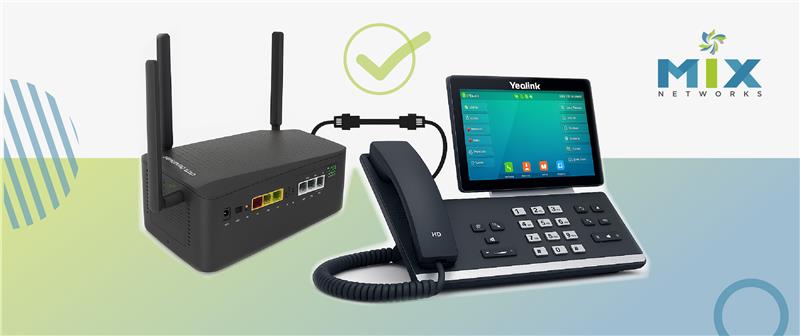VoIP: The Digital Revolution That’s Transforming Business Communications
Voice over Internet Protocol represents more than just a technology upgrade – it’s a fundamental shift in how organizations think about communication. Instead of voice traveling over dedicated copper wires, VoIP converts conversations into digital data packets that travel alongside email, web browsing, and file transfers over your existing internet connection. This seemingly simple change unlocks capabilities that were impossible with traditional phone systems.
The cost advantages alone are compelling. While POTS lines have steadily increased in price, VoIP costs have plummeted as internet infrastructure has improved. A typical business phone system that might cost $8,000 monthly with traditional lines often runs $2,000-3,000 with VoIP, and that’s before considering the enhanced functionality. Unlimited calling plans that include domestic and often international calls are standard, eliminating the anxiety of watching long-distance charges accumulate during important client conversations.
But the real transformation comes from features that simply weren’t possible with analog systems. Consider voicemail-to-email transcription, which converts messages into searchable text delivered to your inbox. Busy executives no longer need to dial into voicemail systems – they can scan messages quickly and respond appropriately. Auto-attendants can route calls based on time of day, caller ID, or even keywords spoken by the caller, ensuring customers reach the right person without human intervention.
Conference calling becomes effortless with VoIP. Instead of expensive bridge services, modern systems allow spontaneous three-way calls that can expand to include additional participants with a few clicks. With advanced collaboration tools, screen sharing, document collaboration, and video integration turn phone calls into full multimedia experiences that accelerate decision-making and reduce travel needs.
The mobility aspect has become even more critical in our hybrid work environment. VoIP systems don’t care whether you’re at your desk, working from home, or traveling internationally. Your business phone number follows you seamlessly across devices. Answer calls on your desk phone in the morning, transfer to your mobile app during lunch, and finish conversations on your laptop from the airport. Clients and colleagues experience consistent professional communication regardless of your physical location.
Scalability represents another dramatic improvement. Adding new employees to a traditional phone system meant ordering new hardware, lines, and licenses, scheduling installation appointments, and waiting weeks for activation. VoIP users can be provisioned in minutes through web-based administration portals. Need to add fifty temporary workers for seasonal demand? Configure their accounts in the morning and have them taking calls on a desktop or mobile app by afternoon. When the season ends, simply deactivate the accounts without cancellation fees or equipment returns.
Integration capabilities set VoIP apart from traditional systems. Modern platforms connect with customer relationship management systems, help desk software, and business applications to provide rich context for every interaction. When a customer calls, their account information, purchase history, and recent support tickets can appear automatically on the recipient’s screen. This level of integration transforms customer service from reactive problem-solving to proactive relationship management.
Call analytics and reporting provide insights that were previously impossible to obtain. Managers can see real-time dashboard views of call volume, wait times, and agent availability. Historical reports reveal patterns that inform staffing decisions and identify training opportunities. Quality monitoring and call recording have become standard features rather than expensive add-ons.
POTS IN A BOX: The Elegant Bridge Between Old and New
While VoIP handles modern business communications beautifully, many organizations face a challenge: what about the equipment that can’t be upgraded? That elevator emergency phone installed in 1995 doesn’t have an ethernet port. The fire alarm panel that monitors your entire building expects to communicate over analog phone lines. The security system that protects your facility after hours was designed for POTS connectivity.
This is where POTS IN A BOX solutions shine as the perfect complement to VoIP systems. These devices are essentially intelligent translators that make your legacy analog equipment think it’s still connected to traditional phone lines while actually routing communications through modern digital networks.
The technology is surprisingly sophisticated. A POTS IN A BOX device connects to your analog equipment exactly like a traditional phone line – same voltage, same signaling, same familiar dial tone. But instead of copper wires leading to a telephone company’s central office, the device converts analog signals to digital packets and routes them through your internet connection or cellular network to reach their destination.
Here’s where the integration with VoIP becomes powerful. Instead of maintaining separate systems for legacy devices, POTS IN A BOX units can connect directly to your VoIP network. That elevator emergency phone isn’t just calling out to some random monitoring service – it’s integrated into your unified communication system. Emergency calls can simultaneously alert building security, email facility managers, and even trigger automated protocols like unlocking doors or activating emergency lighting.
The reliability story is particularly compelling. Traditional POTS lines fail when copper cables are damaged, switching equipment malfunctions, or power is lost at telephone company facilities. POTS IN A BOX devices typically include multiple communication paths – primary internet connection, backup cellular service, and sometimes even satellite connectivity for critical applications. This redundancy often provides better uptime than the original POTS infrastructure.
Installation complexity drops dramatically compared to traditional phone service. Instead of waiting for telephone company technicians to install new lines or repair existing ones, POTS IN A BOX devices can be deployed by internal IT staff or local contractors. The device plugs into your network, cellular service activates automatically, and analog equipment connects using existing wiring. What once required weeks of coordination with multiple vendors can often be completed in a single afternoon.
The cellular backup capability deserves special attention. When internet service fails, POTS IN A BOX devices automatically switch to cellular networks without interrupting ongoing calls or losing connectivity. This seamless failover provides better reliability than traditional POTS lines, which have no backup when their dedicated copper path fails.
Monitoring and management capabilities integrate naturally with VoIP systems. Instead of hoping your emergency phones work when needed, you can receive proactive alerts about connectivity issues, battery status, and service quality. Test calls can be automated and logged, ensuring compliance with safety regulations while reducing manual inspection requirements.
The Strategic Power of VoIP and POTS IN A BOX Solutions Implementation
The most successful POTS replacement projects rarely involve choosing between VoIP and POTS IN A BOX – they strategically deploy both technologies where each works best. This hybrid approach maximizes benefits while minimizing risks and costs.
VoIP handles the heavy lifting for day-to-day business communications. Desk phones, conference rooms, customer service centers, and mobile workers all benefit from VoIP’s rich features and cost advantages. The system provides unified communications that integrate voice, video, messaging, and collaboration tools into seamless workflows.
POTS IN A BOX devices focus on specialized applications where analog connectivity is required or preferred. Elevator emergency phones, fire and burglar alarm panels, modem data, security systems, and legacy equipment continue operating reliably while gaining the benefits of modern digital networks.
The real magic happens when these systems work together. Emergency calls from POTS IN A BOX devices can trigger automated responses through the VoIP system – notifying appropriate personnel, creating incident tickets, and even initiating conference calls with emergency responders. Fire alarm signals can simultaneously alert monitoring companies and internal security teams while automatically unlocking doors and activating emergency protocols.
This integrated approach also provides superior redundancy. If internet service fails, VoIP calls can route through POTS IN A BOX devices using multiple cellular networks. If cellular service is compromised, VoIP continues operating over internet connections. Critical communications have multiple paths to reach their destinations, something impossible with traditional single-path POTS lines.
Management becomes more centralized and efficient. Instead of dealing with multiple phone companies, service providers, and equipment vendors, organizations can monitor and control their entire communication infrastructure through unified management platforms. This consolidation reduces complexity, improves visibility, and enables proactive maintenance that prevents problems before they impact operations.
Most importantly, this hybrid approach future-proofs your investment. As technology continues evolving, both VoIP and POTS IN A BOX solutions can adapt and integrate with emerging platforms. Your communication infrastructure becomes a strategic asset that enables innovation rather than a legacy burden that constrains growth.
Keep Reading:








